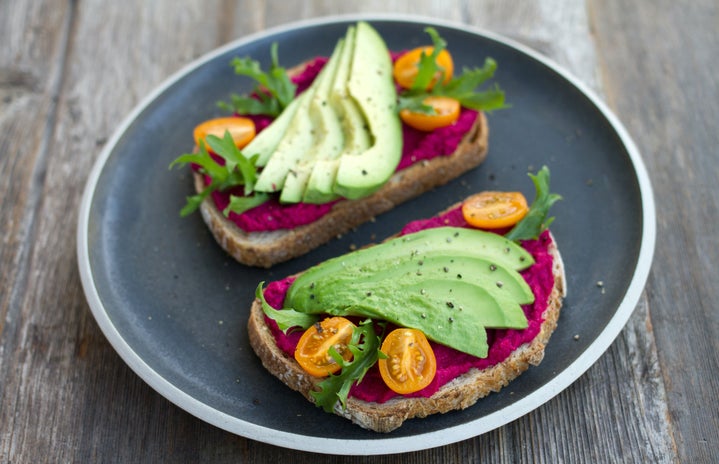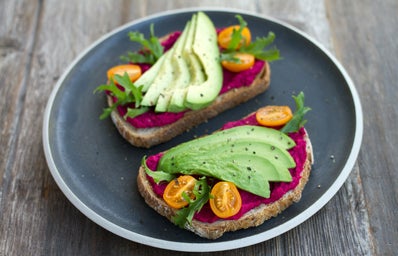Keto, Paleo, Atkins, Weight Watchers, intermittent fasting; any of these ring a bell? If you have any form of social media right now, they probably do. Everyday we are constantly bombarded with new diets, wrapped in shiny packaging and sure to help us reach our weight loss goals. So, here’s the truth behind those buzz words we’ve all been hearing recently.
*Disclaimer: I am not a registered dietician. If you have any concerns with your personal nutrition, please seek a healthcare professional.*
- Keto
-
The Keto diet is a very low carb, very high fat diet. Without getting too *science-y,* this diet is based on switching your body from running on glucose (a form of sugar we get from carbs) to ketones (fatty acids). So, when people on Keto cut their carbs, their body is forced to get its energy from those ketones due to the lack of glucose.
The Good: There has been a lot of research done to show that this diet helps patients with epilepsy/seizures. There also is some early research showing that this could help cancer patients.
The Bad: Nutrient deficiency and the fact that the diet is highly unsustainable make the top of the list. Even though carbs are often villainized, the fact is, good carbs will fuel your body! Each food group provides a wealth of different nutrients, and cutting out basically all carbs is very risky without proper medical guidance. The diet is also extremely hard to stick to. To get the true benefit of Keto, your body needs to stay in ketosis (running off of the fatty acids – ketones) long term, which would be very hard to work into a lifestyle that includes going out to eat, traveling, etc. Not to mention, Keto is a relatively new fad, so the long-term impacts of this diet aren’t able to be studied yet.
- Paleo
-
Paleo is essentially known as the “caveman diet.” The idea is that you only eat what our ancestors 10,000 years ago would have eaten through hunting and gathering. This means no processed foods, as wells as no grains, legumes, dairy, etc. So, this diet consists of fruits, vegetables, meats, nuts and seeds.
The Good: The great thing about Paleo is that it promotes eating unprocessed foods, which are free of added sugars, sodium and artificial ingredients that our body doesn’t need. It helps to create an understanding of more than just the calorie content of your food, but rather what’s actually in the food you consume.
The Bad: Paleo takes out the main source of fiber by removing grains and legumes, and a main source of calcium by taking out dairy products. It can also walk the line of limiting carb intake, which (as seen in the Keto explanation) is not healthy for your body. Not to mention, this diet relies heavily on meat for protein intake, which makes it an almost impossible (and especially risky) diet for vegetarians and vegans. Overall, the diet is simply just not balanced. While it is good to eat more whole foods, your body needs those carbs for energy, and they can often be left out while adopting a Paleo diet.
- Intermittent Fasting
-
Intermittent fasting is when you limit calories during certain days of the week, or during certain times of day during the week. The idea is that having a limited window to eat will decrease the amount of times you feel hungry, and therefore you will eat less.
The Good: it can help those who feel limited by a typical calorie or macronutrient counting approach to diet. There aren’t any specific calorie or food restrictions you need to follow, the only restriction is the time you can eat.
The Bad: Intermittent fasting can promote a very unhealthy relationship with food. It idolizes the concept of denying yourself food, even if your body is craving it. It can often lead dieters to believe that it is bad to eat before 11am or bad to eat after 8pm, even if their bodies need those nutrients. Also, there is an increased risk of overeating after fasting. Your brain goes into survival mode when you are deprived of food, so biologically you are wired to eat more if you have been deprived of those nutrients for a long time.
So, what actually works? There has to be some magical fix-it-all method out there, right? Well, sort of. But the thing is, it’s not really a diet. Diets can often start us on a slippery slope of restriction, and eventually a binge on all the yummy food we thought we had to let go of. That’s where intuitive eating comes in.
Now, I want to say right off the bat that this isn’t an easy thing to transition to, but the effort is well worth it. In between calorie-counting apps and analyzing nutrition labels, we often forget to check in with ourselves to see if we actually want food or not. Intuitive eating is the process of learning to listen to your body’s hunger and fullness cues. If you’re hungry, eat. When you feel satisfied, stop. Much easier said than done, but basically it is reverting back to our natural instinct to let our body tell us what we need, rather than an Instagram influencer.
Nutrition is such an important part of your life. Skip the fad diets, and listen to your body!



